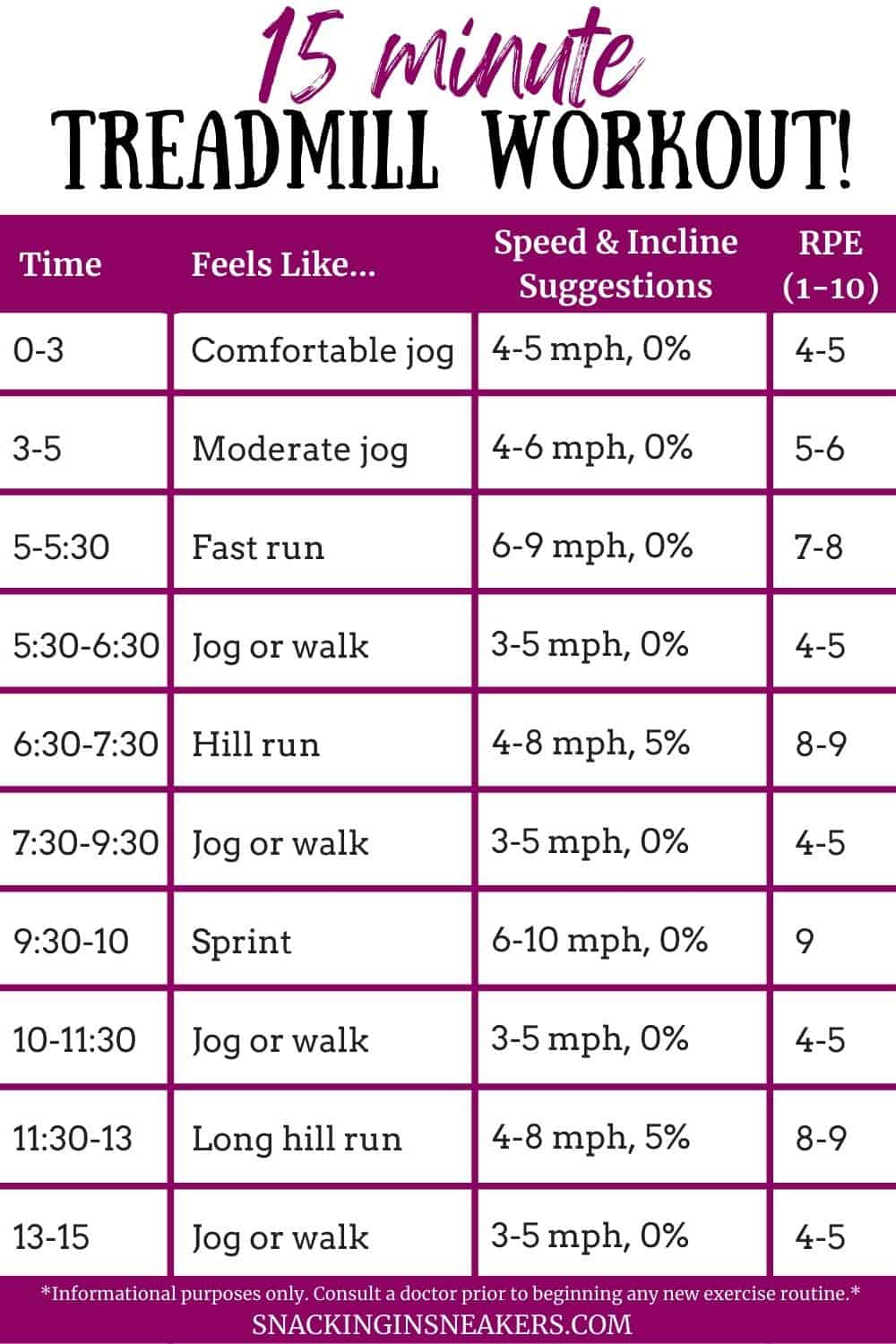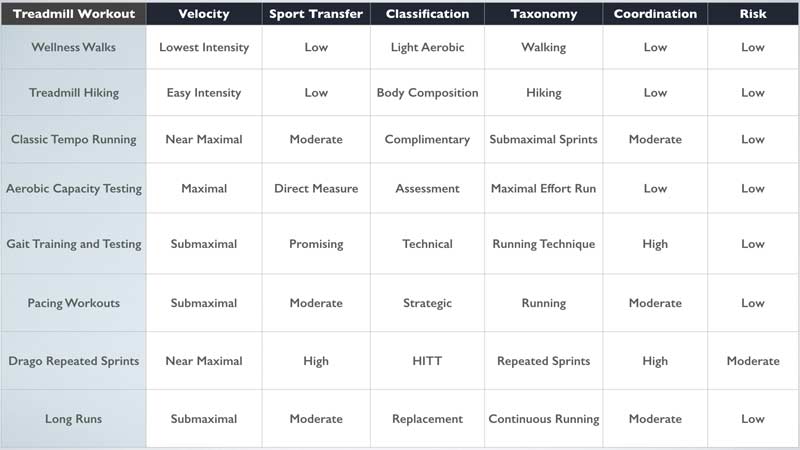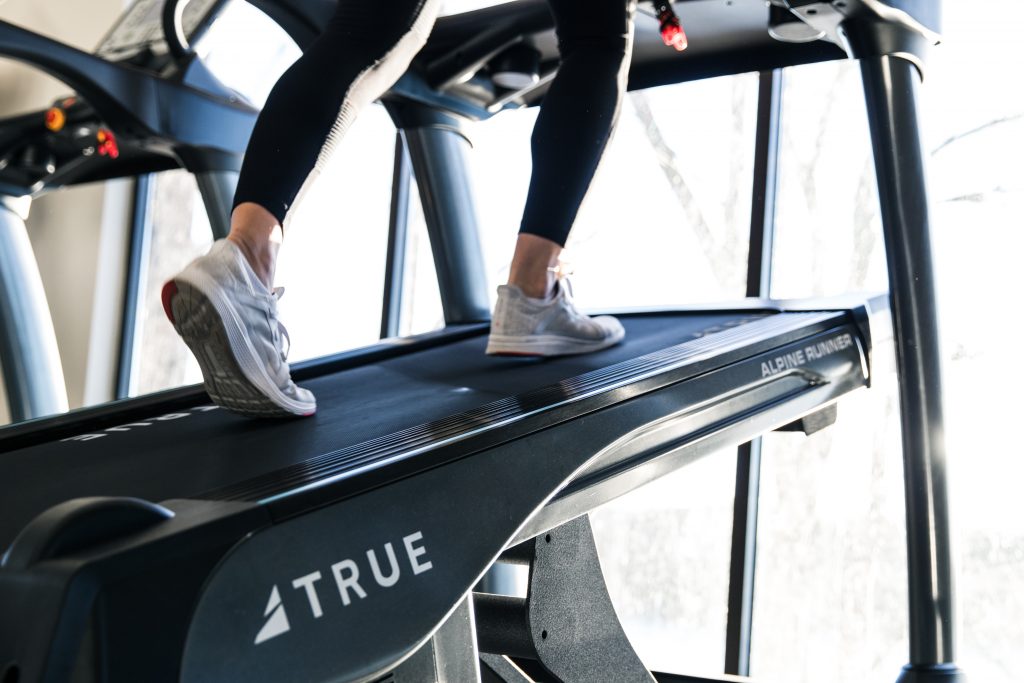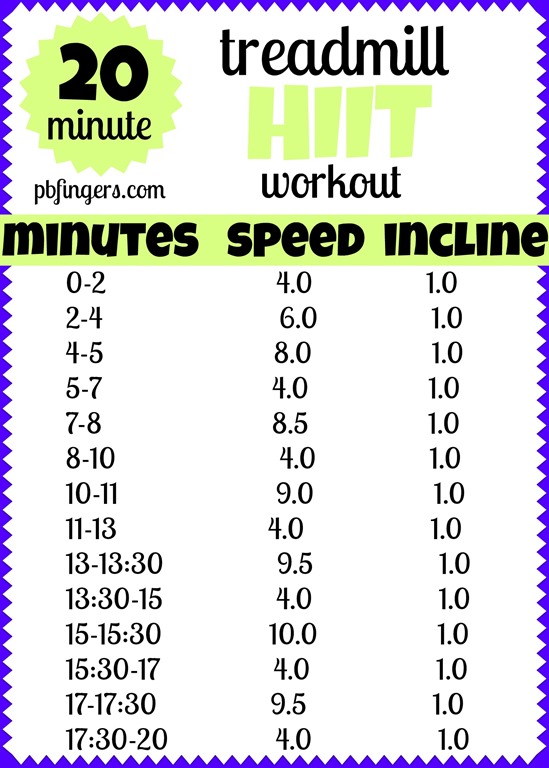Run to Success: Treadmill Interval Training for Runners
The best sellers
As a runner, you're always looking for ways to enhance your performance, shave off seconds from your personal best, and smash those personal milestones. The path to success may seem straightforward on the surface, but like any good long-distance runner will tell you, it always helps to have a few extra cards up your sleeve. That's where treadmill interval training comes in – a powerful tool for runners to increase their speed, endurance, and ultimately, achieve their goals.
If you're ready to leave your comfort zone and push yourself towards running success, read on to discover the transformative power of interval training on the humble treadmill. Who knew that success could be a just a few sprints away?

2. Using a Treadmill for Interval Training
Looking to improve your running performance? Interval training on a treadmill might be the answer you need. This versatile workout method keeps your body on its toes by alternating high-intensity exercises (85% target heart rate) with lower intensity exercises (70% target heart rate). Before starting interval training on a treadmill, ensure that you have a regular exercise routine in place to prepare your body for a higher intensity workout.
The benefits of interval training are numerous and include increased endurance, reduced appetite, and lower stress levels. How can you incorporate interval training into your treadmill workout ? Varying speed is one option – start by walking or jogging as a warm-up, then increase your speed for two minutes before returning to a more comfortable pace for recovery. More experienced runners can push themselves further during the interval period but should always return to their base speed to recover.
Alternatively, try varying the incline of your treadmill. Start with a warm-up at an incline of 1.0 and then periodically increase the elevation for one-minute intervals with one-minute recovery periods at your base incline. Ensure that you maintain a consistent speed throughout the intervals, followed by a cool down period on a flat incline. Experiment with the length of each interval to suit your fitness level, from 30 seconds for beginners to five minutes for experienced runners. Just remember to allow at least one minute for recovery to let your body recuperate. [1][2]

3. Improving Stamina through Treadmill Interval Training
Are you looking to improve your stamina and become a better runner? Treadmill interval training may be the perfect solution for you. This type of training combines speed, power, and endurance to enhance your overall running performance. Plus, you can easily customize the workouts to fit your skill level and goals.
To get started with treadmill interval training, try incorporating a mixture of sprints, hill workouts, and Fartlek (speed play) training into your routine. These workouts challenge your body by blending high and low-intensity exercise, allowing you to build speed, strength, and endurance more effectively.
Don't forget to use a pace chart to help you determine the appropriate speeds for your intervals, based on your personal bests and averages. This ensures you're working at the right intensity to make progress without overexerting yourself.
Remember, consistency is key when it comes to improving your stamina. Commit to incorporating treadmill interval training into your routine regularly, and you'll soon notice a significant difference in your running performance. So, strap on your running shoes and hit the treadmill for a challenging and rewarding workout that will bring you closer to your running goals. [3][4]

Introduction: Explanation of Treadmill Interval Training
Treadmill interval training is a highly effective way for runners to improve their stamina, speed, and endurance, regardless of their current fitness level. This training technique involves alternating between high-intensity and low-intensity running or walking intervals on a treadmill, allowing individuals to engage various muscle groups and energy systems while minimizing the risk of overuse injuries. By continually challenging the body with varying speeds and inclines, runners can avoid the boredom that typically comes with treadmill workouts and instead focus on achieving their specific goals, whether it's to increase their pace, cover a greater distance, or simply become a better overall athlete. With treadmill interval training, it's essential to choose workouts that cater to one's fitness level and monitor one's progress over time to make the necessary adjustments and improvements. [5][6]

Section 1: Benefits of Treadmill Interval Training
One of the most effective ways to boost your endurance and stamina is by incorporating treadmill interval training into your fitness routine. This type of workout offers numerous benefits that can help you achieve your running goals while keeping you motivated and engaged.
Firstly, treadmill interval training significantly improves cardiovascular health. By alternating between high-intensity bursts of running and periods of active recovery, you maintain an optimal heart rate that supports overall heart health. Moreover, this type of workout helps to increase metabolism, as your body works harder to recover from the intense exercise. As a result, you burn more calories, which aids in weight loss.
In addition to cardiovascular health and increased metabolism, treadmill interval training also enhances running performance. By pushing your body to its limits in short intervals, you train it to handle prolonged periods of activity, ultimately improving your endurance. Besides increasing endurance levels, this type of training is time-efficient. You can achieve a highly effective workout in a fraction of the time spent on traditional, steady-state running routines.
In summary, incorporating treadmill interval training into your fitness regimen can lead to significant improvements in cardiovascular health, metabolism, running performance, endurance, and overall stamina. With these benefits, it's no wonder that both recreational and professional runners alike are turning to this efficient and engaging workout method. [7][8]

Increased endurance
Treadmill interval training is an excellent way to increase endurance, improve cardiovascular fitness, and develop leg muscles to better handle the demands of regular running. With a range of different workouts available, runners can tailor their exercise routines to suit their individual needs and goals. One of the key advantages of treadmill running is the ability to manipulate the speed and incline to simulate various running conditions.
The 3-2-1 workout is particularly effective in improving stamina and endurance, providing an excellent foundation for other forms of interval training. By alternating between periods of fast running and recovery pace, runners can work on pushing their aerobic capacity and adapting to the demands of continuous effort. This type of workout is suitable for beginners and more experienced runners alike, with adjustments made to intensity and duration as needed.
Sprint intervals, on the other hand, focus primarily on building speed and power in the legs. This workout requires runners to perform short, high-intensity sprints, followed by rest periods or lower-intensity exercise. This type of training can be challenging but highly rewarding, as it develops fast-twitch muscle fibers essential for explosive bursts of speed.
In conclusion, incorporating treadmill interval workouts into a running routine can significantly improve endurance, speed, and overall cardiovascular fitness. With consistency and dedication, these exercises can lead to noticeable improvements in running performance and help runners reach their fitness goals. [9][10]

Improved lung capacity
Treadmill interval training is a fantastic way to improve lung capacity and boost overall running performance. By incorporating various paces and incline levels within a single workout, runners can effectively challenge their lungs to adapt to different intensities, resulting in increased stamina and cardiovascular endurance.
One of the key elements of treadmill interval training is its ability to push runners beyond their comfort zones. By switching from steady-paced runs to sprints, followed by periods of active recovery, the lungs are forced to work harder to provide oxygen to the muscles. This constant change in intensity trains the lungs to become more efficient at oxygen uptake, leading to improved lung capacity over time.
Treadmill interval training is also beneficial for enhancing running form and efficiency. Incorporating hill workouts in a training regime helps strengthen the leg muscles and develop core stability, making it easier to maintain faster paces during runs. This, in turn, allows the lungs to work more effectively at providing oxygen to sustain these higher speeds.
With consistent practice, runners who engage in treadmill interval training can expect to see improvements not only in lung capacity but also in overall running performance. Regardless of experience level, incorporating these challenging workouts can provide invaluable benefits, helping runners of all levels achieve running success. [11][12]

Enhanced cardiovascular health
Treadmill interval training can work wonders for runners seeking to improve their cardiovascular health. Engaging in speed and endurance-focused workouts on a treadmill helps support increased stamina, ultimately resulting in better overall running performance.
One popular and effective approach is High Intensity Interval Training (HIIT) workouts. These involve alternating between periods of high-intensity exercises, such as sprints, and lower-intensity periods for recovery. HIIT workouts have been proven to boost cardiovascular fitness by increasing one's capacity for high-intensity work. Additionally, they help burn more calories in a shorter amount of time compared to steady-state exercise.
Another powerful training method is Fartlek workouts, which combine speed and endurance training. This technique involves continuous running with varying speeds and intensity level, helping runners become more adaptable. It also takes the pressure off maintaining a consistent pace, allowing individuals to focus on the effort they're putting in at each interval.
Incorporating hill workouts into treadmill training can also yield impressive results. Running or walking on an incline builds strength and power in the lower body muscles, thereby increasing speed and endurance. Regular hill workouts make running on flat ground feel easier, preparing runners for races on any terrain.
In conclusion, treadmill interval training offers a diverse range of exercises that cater to different fitness goals. Runners who regularly engage in these workouts can expect improvements in stamina and cardiovascular health, contributing to their overall success as athletes. [13][14]

Section 2: How Treadmill Interval Training Works
Treadmill interval training is an effective way to improve a runner's stamina and endurance. This type of workout involves alternating between periods of high-intensity running and recovery periods that allow the body to adapt to the stress of training. By incorporating treadmill interval training into your fitness routine, you can reap the benefits of increased speed, strength, and overall cardiovascular health.
The primary reason treadmill interval training is so effective is that it pushes the body to work harder than it would during a continuous, steady-state run. By incorporating high-intensity bouts of running into the workout, the cardiorespiratory system is forced to adapt and become more efficient at delivering oxygen and energy to the working muscles.
Moreover, treadmill interval training can be a time-effective method to improve your running performance. Compared to traditional long, slow runs, using treadmill intervals enables you to achieve more significant gains in endurance and speed in a shorter amount of time. The varied pace and intensity of treadmill interval training also keep the workout engaging and challenging, reducing monotony and boredom that can sometimes accompany steady-state running.
In conclusion, treadmill interval training is an excellent addition to any runner's training plan. By incorporating these workouts into your routine, you can experience increased endurance, speed, and overall running performance. Give it a try, and watch your running abilities soar. [15][16]

Explanation of High-Intensity Interval Training (HIIT)
High-Intensity Interval Training (HIIT) has gained immense popularity in the fitness world due to its effectiveness in delivering quick and challenging workouts. This type of training program typically involves brief periods of intense exercise followed by short recovery intervals to allow the body to regain energy. Incorporating HIIT into treadmill routines can help break the monotony of steady-state workouts and accelerate fitness improvements
One of the reasons why HIIT is so effective lies in its ability to recruit fast-twitch muscle fibers, which are responsible for anaerobic or short, powerful bursts of energy. These fibers require more fuel to function and recover, leading to increased calorie burn during and after the workout. This phenomenon, known as the after-burn effect, keeps the body burning calories even when the workout is completed.
To perform a HIIT treadmill workout, individuals must first identify the appropriate settings for their fitness levels. This includes finding a sustainable speed and incline for a challenging 1-minute work interval, followed by a 1-2 minute recovery period at a lower intensity. Using the Rate of Perceived Exertion (RPE) scale can help gauge the correct intensity; a 9-10 on the scale indicates maximum effort, whereas a 1 suggests minimal exertion. By alternating between high-intensity and recovery intervals, HIIT treadmill workouts effectively improve cardiovascular fitness, stamina, and calorie burn. [17][18]

The science behind HIIT and its effectiveness
High-Intensity Interval Training (HIIT) has gained popularity in recent years due to its effectiveness in improving overall health and fitness. This exercise approach involves repeated short bursts of intense activity, followed by periods of rest or low-intensity exercise. Research has shown that HIIT leads to numerous physiological adaptations that enhance exercise capacity, such as increased maximal oxygen uptake, aerobic endurance, and anaerobic capacity.
One of the main reasons for HIIT's success is its adaptability and time efficiency. Unlike traditional cardio workouts, HIIT sessions can be tailored to an individual's fitness level and are often completed within a shorter time frame. This makes it a convenient option for those with busy lifestyles who struggle to find time for exercise.
In addition to being adaptable, HIIT also produces rapid results, with studies showing significant improvements in health, fitness, and performance after just a few sessions. This form of exercise is particularly beneficial for endurance athletes, as it can lead to further improvements in aerobic and anaerobic metabolism beyond those achieved through basic aerobic training. HIIT has also been found to lower resting heart rate, blood pressure, and blood sugar levels, while increasing fat metabolism and improving insulin resistance.
Overall, the science behind HIIT supports its effectiveness in promoting exercise capacity and overall health. With its adaptability, time efficiency, and rapid results, it is no wonder that HIIT has become a popular choice for many seeking to reap the benefits of exercise. [19][20]

Section 3: Treadmill Interval Training: Step-by-Step Guide
Treadmill interval training is an effective way to improve stamina, burn calories, and increase running speed. It involves alternating between periods of high-intensity exercise and low-intensity recovery, which keeps the body guessing and forces it to adapt to different speeds and efforts.
To begin a treadmill interval workout, it's essential to warm up with a gentle jog or a brisk walk for at least five minutes. This helps get the blood flowing and prepares the muscles for the intense exercise to come. After warming up, increase the speed and incline of the treadmill according to one's fitness level and run at this pace for a set period. This might be a 30-second sprint followed by a 30-second rest, or perhaps a two-minute run at a challenging incline.
Once the high-intensity interval is complete, reduce the speed and incline to give the body time to recover before the next intense burst. This recovery period may include walking or jogging at a comfortable pace, depending on personal preference and fitness level.
For maximum efficiency and to see the best results, it's essential to repeat this cycle of high-intensity work followed by low-intensity recovery for the duration of the workout. Aim for at least 20 to 30 minutes in total, adjusting the interval lengths and intensity according to progress over time.
By consistently incorporating treadmill interval training into a workout regime, one can expect to see improvements in stamina, overall fitness, and running performance. [21][22]

Warm-up exercises
Before jumping into any treadmill interval training workout, it is essential to properly warm up your body and prepare it for the exercises ahead. A good warm-up routine should include dynamic stretches and light cardio to get your blood flowing and your muscles warmed up. Here are some warm-up exercises to perform before starting your treadmill interval training:
1. Begin with a brisk walk or light jog on the treadmill for five minutes to get your heart rate up and your muscles warmed up. Gradually increase the speed to ensure your body is ready for the intense workout ahead.
2. Leg swings: Stand next to the treadmill and swing your leg forward and backward, keeping your balance and engaging your core. Do 10-15 swings with one leg, then switch to the other leg. This exercise is great for warming up your hip flexors and glutes.
3. Arm circles: Extend your arms out to the sides at shoulder level and start circling them in small motions. Gradually increase the size of the circles and reverse the direction after about 30 seconds.
4. High knees: Stand in place and march your knees up high, engaging your core and pumping your arms at the same time. Perform this exercise for about 30 seconds.
5. Butt kicks: Similar to high knees, stand in place and kick your heels up towards your glutes, alternating legs. Pump your arms as well to make this a full-body warm-up exercise. Do this for about 30 seconds.
By performing these warm-up exercises, you will ensure that your body is well prepared for the treadmill interval training ahead. Remember to listen to your body and never push yourself too hard during your warm-up. [23][24]

Interval Training Cycle
Treadmill interval training is an effective way for runners to boost their stamina, as it combines high-intensity exercises with periods of rest, allowing the body to recover and adapt. By incorporating various speed and incline settings, runners can challenge their cardiovascular system, improve their VO2 max, enhance their muscular endurance, and increase their overall running efficiency.
One popular method of treadmill interval training is speed intervals, where runners alternate between sprints and rest periods. This type of workout forces the body to adapt to different speeds, improves anaerobic capacity, and increases calorie burn compared to low-intensity, steady-state exercises.
Another effective treadmill interval workout is hill training, which can help to develop strength and power in the lower body muscles, leading to faster running times on flat surfaces. By alternating between incline and flat intervals, this workout also elevates heart rates and improves overall cardiovascular fitness.
Finally, incorporating a more versatile workout, such as incorporating Fartlek training, can also be beneficial. This method blends speed and endurance training, allowing runners to focus on effort rather than pace. Overall, treadmill interval training provides an excellent opportunity for runners to reach their stamina goals in a controlled, engaging environment. [25][26]

Suggested Training Programs
Looking to enhance your running performance? Treadmill interval training offers the perfect combination of speed, endurance, and stamina. Here are four suggested training programs to help you reach your goals:
1. Speed Interval Workout:
This workout focuses on increasing your speed for various race distances. Modify the number of rounds you complete to create a customized 30-minute session. Aim to maintain your target pace for the specified intervals.
2. Endurance Interval Workout:
Ideal for those looking to build endurance, this 45-60 minute workout incorporates slower paces and longer intervals, making it great for beginners. Adjust the number of rounds to suit your needs and watch your running stamina increase.
3. Stamina Interval Workout:
Combining speed, power, and endurance, this challenging workout is suitable for experienced runners. However, by pacing correctly, even beginners can benefit. Complete the workout once for a 25-minute session or twice for a 50-minute session.
4. High-Intensity Interval Training (HIIT) Workout:
This 15-minute HIIT treadmill workout is ideal for intermediate to advanced runners familiar with pushing their limits. Complete five rounds and go all out during the 30-second intervals for maximum impact on your speed and endurance. [27][28]

The best sellers
Conclusion: The power of Treadmill Interval Training for runners
In conclusion, treadmill interval training proves to be a highly effective method for runners to enhance their performance, stamina, and overall fitness levels. By incorporating a mix of high-intensity and low-intensity intervals, runners are able to target a multitude of muscle groups, sharpen their focus, and increase calorie burn more efficiently than with steady-state exercises.
One of the main benefits of treadmill interval training is its adaptability. Runners of all levels, from beginners to advanced athletes, can customize workouts to match their specific training goals and current fitness levels. Moreover, the convenience of a home treadmill allows for greater consistency in maintaining a fitness routine, irrespective of outdoor weather or safety concerns.
Additionally, treadmill intervals enable runners to improve their speed and endurance in a more manageable, structured environment. The continuous challenge of alternating intensities pushes the body to break through plateaus and achieve new heights. Furthermore, this type of training can be an excellent complementary tool for those preparing for races, as it builds strength and stability needed for successful outdoor competition.
Ultimately, by integrating treadmill interval training into a regular fitness program, runners can experience significant gains in stamina, speed and overall performance, while also keeping their workouts fresh and engaging. [29][30]
Frequently asked questions
Q: What is treadmill interval training?
A: Treadmill interval training involves alternating between periods of high-intensity exercise and active rest on a treadmill. This HIIT treadmill workout is an efficient way to improve cardiovascular fitness, burn fat, and boost endurance for runners.
Q: Is treadmill training a good option for runners?
A: Yes, treadmill training can be a great option for runners who want to boost their cardiovascular fitness, endurance, and speed. It can also be used to supplement outdoor training in inclement weather or when access to running trails is limited.
Q: Can you train for a marathon on a treadmill?
A: Yes, many runners have successfully completed marathons on a treadmill. Treadmill training can provide an effective way to simulate outdoor conditions, practice pacing, and build endurance in a controlled environment.
Q: What are some benefits of HIIT treadmill workouts for runners?
A: HIIT treadmill workouts can help runners improve their speed, endurance, and cardiovascular fitness. They can also be a time-efficient way to burn fat, enhance metabolism, and reduce the risk of injury.
Q: How do I create a treadmill workout for runners?
A: You can create a treadmill workout for runners by incorporating HIIT intervals, varying incline and speed, and adjusting workout length and intensity based on your training goals. It's important to gradually increase the challenge of your workout over time to avoid injury and maximize results.
Q: Should I train different on a treadmill than outside?
A: Treadmill training can complement outdoor training, but it's important to adjust your strategy based on the differences between both. Running on a treadmill can limit air resistance, impact, and natural variations in terrain, so it's important to take that into account when designing your training plan.
Q: How do I maintain motivation during a treadmill workout?
A: Many runners experience a lack of motivation when running on a treadmill, also known as "dreadmill." To combat this, you can break up your workout into shorter intervals, listen to music or audio books, set goals and rewards, or incorporate challenges like incline running or speed intervals.
Q: What are some key tips for marathon training on a treadmill?
A: Some essential tips for marathon training on a treadmill include gradually building distance and intensity, varying incline and speed, simulating outdoor conditions, practicing nutrition and hydration strategies, and incorporating strength and flexibility training.
Q: Can treadmill workouts help with fat loss?
A: Yes, treadmill workouts can be an effective way to burn calories and lose fat. HIIT treadmill workouts have been shown to boost metabolism and promote fat loss even after the end of the workout.
Q: How can I avoid injury when training on a treadmill?
A: To avoid injury when training on a treadmill, it's important to warm up and cool down, wear supportive shoes, maintain proper form and stride, gradually increase speed and intensity, and listen to your body's signals for pain or discomfort. It can also be helpful to work with a certified running coach or triathlon coach for personalized guidance and support.
